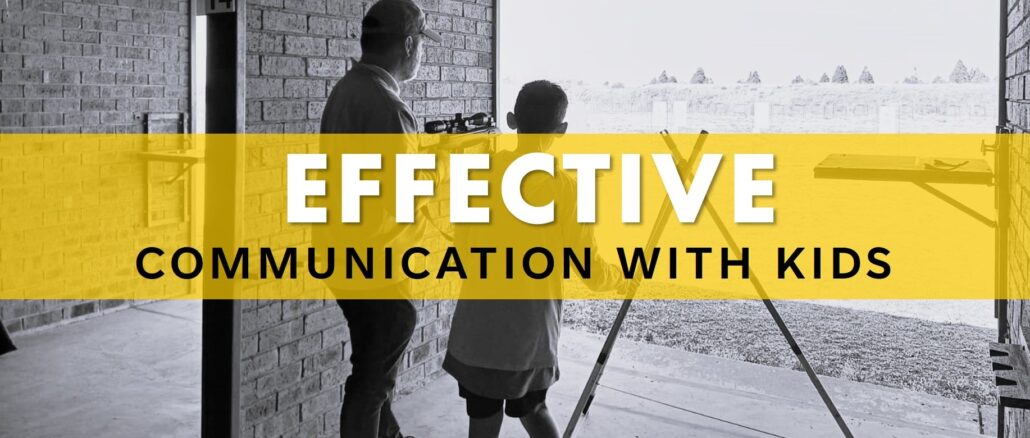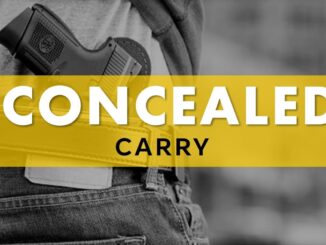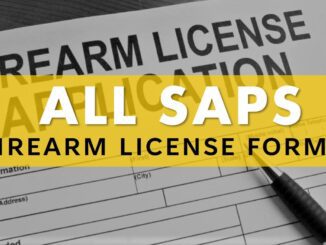
Teaching firearm safety to children is a crucial responsibility for any firearm-owning family. Effective firearm communication with kids plays a pivotal role in this process. By instilling knowledge, respect, and understanding early on, we can help our kids make informed choices and stay safe. Here are some effective communication strategies for kids and firearms.
Teaching Firearm Safety

Educating children about the dangers of firearms from an early age is the most important starting point as a firearm owner. From here, you can tailor your discussions around firearms to include other topics on firearm safety, according to their maturity level.
Education is Key:
Begin teaching firearm safety when your child is old enough to understand basic rules, usually around the age of four or five. Use age-appropriate language and concepts, ensuring they grasp the seriousness of the topic without causing undue fear. Start by emphasizing that firearms are not toys and should never be touched without adult supervision. Explain that guns are designed for a specific purpose and can cause harm if not handled properly.
Age-Appropriate Discussions:
Tailor your conversations to your child’s age and maturity level. Younger children may simply need to understand that guns are dangerous, while older kids can delve into more detailed discussions about firearm safety rules. Foster an environment where your child feels comfortable discussing firearms with you. Encourage questions and provide honest, straightforward answers.
The Four Fundamental Rules:
Teach your children how to safely handle and unload a firearm, emphasizing the importance of the four fundamental firearm safety rules:
1. Treat every gun as if it’s loaded.
2. Always keep the firearm pointed in a safe direction.
3. Keep your finger off the trigger until you’re ready to shoot.
4. Know your target and what lies beyond it.
Practicing Safety Drills

As your children reach an age of greater understanding, you can progress onto practicing safety drills. This includes teaching them phrases on how to act if they encounter a firearm. This can help your child practice making safe choices and knowing what to do if they encounter a firearm when you’re not around.
“Stop, Don’t Touch, Leave, Tell an Adult”:
Drill this simple mantra into your children’s minds to ensure they respond safely if they ever encounter a firearm:
1. Stop: Freeze in place.
2. Don’t Touch: Never pick up or handle the firearm.
3. Leave: Slowly back away.
4. Tell an Adult: Find a trusted adult immediately.
Effective Communication During an Emergency

Should a situation ever arise where you need to use your firearm for self-defence within your home, you need to ensure that your family have an effective drill in place.
Stay Calm:
In the unlikely event that a situation arises where a firearm needs to be used in self-defence, it’s crucial for adults to remain calm. Panic can make a dangerous situation even worse, especially with kids in the house. They often work off your emotions, and if they see you in a state of panic, they are likely to respond in the same manner.
Secure the Kids:
If your children are present during a situation requiring firearm use, ensure their safety first. Instruct them to follow the “Stay Calm” drill: find a safe hiding spot, stay quiet, and wait for further instructions.
Communicate Clearly:
Use simple and direct commands to communicate with your children during a crisis. For example, if you must use a firearm to protect your family, you might say something like, “Stay in your hiding spot until I come to get you” or something simple like, “Hide quickly now”, or “Hide like we practised”.
Rehearse the Plan:
Regularly practice safety drills, including scenarios where you need to use a firearm. Repetition helps children remember what to do in stressful situations.
Reinforce the safety rules frequently. Remind your child that safety is an ongoing process, not a one-time lesson.
Effective firearm communication with kids involves a combination of education, practice, and clear communication during emergencies. By instilling respect for firearms, teaching safety rules, and conducting regular drills, you can empower your children to respond appropriately if they ever encounter a firearm or are present during a self-defence situation. Remember, the goal is not to make children fearful of firearms but to ensure they have the knowledge and skills to stay safe in any situation involving guns.

Let Us help You With Your Firearm Application
We offer a comprehensive range of services to assist you in obtaining your firearms license. If you’re looking to apply for a Firearms license in South Africa, GUNLINK are specialists in this process. We help you to compile your application, along with your motivation, and ensure that you have all the correct documentation for your submission to SAPS.




Be the first to comment